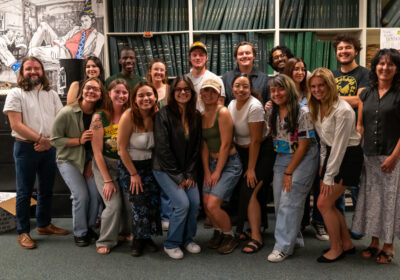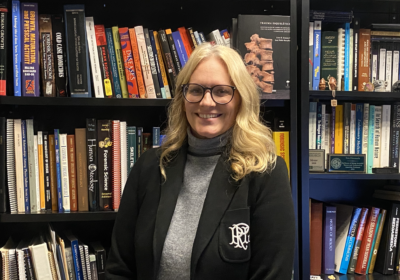The lowdown on fake weed
Despite legislative efforts to outlaw them, packets and jars of products such as Spice and K2 can still be bought at most local convenience stores as easily as gum and Gatorade. Products with names like “Red Dragon” and “Blueberry Meditation”contain a blend of herbal plants sprayed with chemical compounds meant to mimic the effects of marijuana.
Warnings on the labels state that the smoke should not be inhaled, but more than 9,000 calls were made in the last two years to poison control centers in the U.S. concerning these products, according to awhitehouse.govfact sheet.
The Oracle sat down with USF professor and associate director of the Alcohol and Substance Use Research Institute Jack Darkes to learn about fake weed and how it has remained legal in spite of state and federal bans.
The Oracle:What are thedifferences between theseproducts and actual marijuana?
Jack Darkes: There are the two major cannabinoid receptors: one and two. Marijuana tends to, in general, activate both of these equally. (Synthetic marijuana molecules) were specifically designed for use as research chemicals to try and understand the wayscannabinoid receptors in the body work. Because of the way they were synthesized, theyactually activate the CB1 receptor more strongly than marijuana does. CB1 is the one associatedwith the psychotropic effects.
Even though it’s relativelynew, a lot of what is being kind of talked about as potentialnegatives are also potential risks associated with marijuana use. So even though these drugs aren’t marijuana – they’re not THC – their actions once they are in the body are relatively similar.
O:What are the risks associated with products marketed as incense, but bought as marijuana substitutes?
JD:When we talk aboutsynthetic molecules being used, we certainly have to think about the potency issue. In general, they activate the receptor more strongly, so in general, they are more potent when it comes to psychological effects.
One would imagine that the people who are actually creatingthese products – K2, Spice- that there’s no quality control. Just as with two marijuana joints, you may get different potencies that are at least going to be in a certain limited range.
With these drugs, twodifferent packets of K2 that one might buy in two differentplaces may contain different concentrations of the chemical. They may even contain differentvariations on the molecule.There’s a really large numberof different variationson these synthetic molecules that are out there. So you don’t really know which one you are getting necessarily.
O:How has it maintainedlegality?
JD:The state of Florida in its last legislative session outlawed five variations of the chemical. The problem is there’s a lot of these out there. Clever chemists are still tweaking what is out there. With a lot of them, the molecule is different enough that they’re not even close enough to consider them analogs of THC. And even if they are analogs, on the Controlled Substances Act, there’s what they call the Analog Act that says any drug that’s a chemical analog of a controlled substance is itself controlled. But that’s only in the case of when they’re sold as humanconsumption.
They all say “not for human consumption.” So if it’s not for human consumption, even if it is an analog, it doesn’t fall under the Analog Act. There’s chemical ways of manipulating themolecule to get around legal sanctions and there’s also legislative-based ways to get around it in the way youdefine it.
O:Is there any chance that these products will becompletely outlawed?
JD:It’s hard to see how that could actually happen because if you outlaw K2, which isbasically a brand name, as long as there are novel variations of the compound, another one will be used instead. It’s hard toimagine how one could create a law comprehensive enough to kind of capture that.
O:Do you think this”free-for-all” over syntheticmarijuana will affect arguments for and against marijuanalegalization?
JD:I’d like to think that the two issues could be separated from each other in some way. On the other hand, the skepticin me suggests that it’s likelyto be something people can point to and say, “See? See whathappens?”
A lot of the decisions, when it comes to (legalization), are often very emotion-based. It’sprobably going to get a negativehalo. The medical marijuanadiscussion is probably going tobe kind of overshadowed and pulled into this kind of thing.
O:Have you done any research with what’s been labeled”synthetic marijuana?”
JD:A lot of the stuff we are doing now is with younger kids, but if I were to be doing the research I did five or 10 years ago with college students, it’sdefinitely one of the things Iwould include.
There was a study done at (the) University of Florida about a year and a half ago that was recentlypublished that suggests about 10 percent of the students theysurveyed had used. So, it’sclearly not as prevalent as use ofmarijuana or alcohol or tobacco. But it is more prevalent than use of serious drugs like cocaine.
O:What would your advice be for a college studentcontemplating purchasing these products?
JD: My generic advice would be it’s probably not a good idea. It’s got the positive side – technically, you’re not breaking the law. So for those concerned about engaging in illegal activities themselves, it doesn’t force you to interact with, for lack of a better term, acriminal element. So that lifts a burden and creates a sense of security. On the other hand, one could say you are engaging in a very risky kind of behavior when you’re trusting in whoevercreated this product. That’s apretty great risk.







